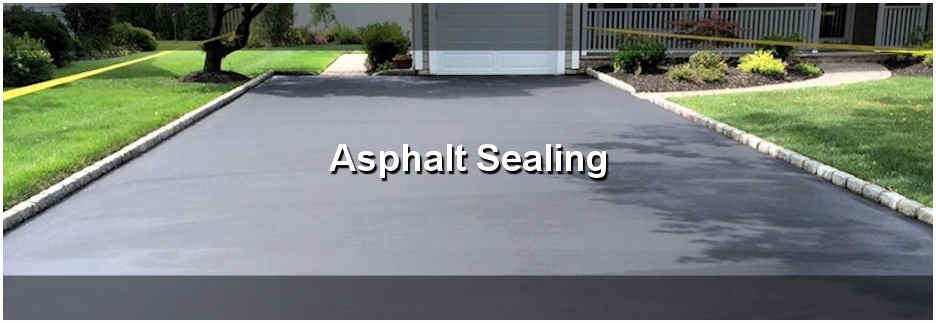Change Your Property's Visual appeals: Commercial Parking Area Leading and Asphalt Sealing Solutions
Change Your Property's Visual appeals: Commercial Parking Area Leading and Asphalt Sealing Solutions
Blog Article
Hot Mix Asphalt: A Sustainable Option for Sidewalk
Warm Mix Asphalt (HMA) has become a leading lasting choice for pavement services, providing a myriad of environmental advantages and cutting-edge technologies. Its capacity to reduce and reuse products energy consumption offers an engaging instance for its adoption in road building and construction projects. Additionally, the long-term efficiency and longevity of HMA make it a preferred alternative for facilities development. As the need for environmentally friendly construction techniques grows, checking out the subtleties of HMA's sustainability can offer beneficial insights into the future of pavement options.
Ecological Benefits of Hot Mix Asphalt

In Addition, Hot Mix Asphalt aids to reduce urban heat island effects. Its dark color absorbs sunlight, lowering the amount of warm reflected back right into the atmosphere compared to lighter-colored sidewalks. This can lower ambient temperatures in metropolitan locations, reducing the need for cooling and inevitably decreasing power intake.
On top of that, Warm Mix Asphalt adds to improved stormwater management. Its porous nature allows water to penetrate the sidewalk and recharge groundwater products, reducing runoff and the risk of flooding. These environmental benefits make Warm Mix Asphalt a sustainable choice for paving freeways and roadways.
Power Performance in HMA Manufacturing
Is power effectiveness a vital element in the production of Hot Mix Asphalt (HMA)? Power plays a substantial function in the production of HMA, affecting both expense and environmental sustainability. One essential aspect of power effectiveness in HMA production is the usage of cozy mix asphalt (WMA) innovations.
Moreover, improvements in plant innovations have caused more energy-efficient HMA manufacturing processes. Modern plants are designed with features like recycled asphalt sidewalk (RAP) processing abilities, efficient heater systems, and enhanced insulation, all adding to power savings. By enhancing energy usage in HMA production, the industry can lower its carbon footprint while preserving top quality sidewalk materials. Energy effectiveness is, therefore, a vital consideration in making certain the sustainability of Hot Mix Asphalt manufacturing.
Recyclability of Hot Mix Asphalt
The recyclability of Warm Mix Asphalt (HMA) is a crucial aspect of its sustainability and long-lasting ecological effect. HMA is among one of the most recycled materials in the United States, with over 100 million lots of redeemed asphalt sidewalk (RAP) being reused yearly in brand-new sidewalk construction. Recycling HMA uses several ecological advantages, such as lowering the need for virgin materials, lowering energy usage during production, and reducing the quantity of waste sent out this website to land fills.
The procedure of reusing HMA includes grating the existing sidewalk, crushing it into smaller items, and blending it with brand-new aggregate and asphalt binder to produce a recycled mix. This recycled mix can usually perform as well as or perhaps far better than conventional HMA, while needing fewer raw materials and producing reduced greenhouse gas exhausts. By incorporating RAP into brand-new sidewalk jobs, road agencies can preserve natural deposits, minimize expenses, and decrease the ecological impact of road building and maintenance activities. Generally, the recyclability of HMA plays a substantial function in promoting lasting techniques within the pavement industry.

Long-Term Efficiency of HMA
Asphalt pavements show toughness and durability over an extensive duration, mirroring the long-term efficiency of Hot Mix Asphalt (HMA) In addition, developments in HMA technology, such as the use of polymer-modified binders and cozy mix asphalt, have actually additionally boosted the toughness and durability of HMA sidewalks. By focusing on quality building and maintenance practices, HMA continues to verify itself as a sustainable and affordable solution for resilient sidewalk infrastructure.

HMA: Longevity and Sustainability
Showing both sturdiness and sustainability, Warm Mix Asphalt (HMA) has come to be a cornerstone in the construction of lasting pavement frameworks - regrading. HMA's resilience originates from its ability to hold up against heavy tons, extreme weather condition problems, and high traffic quantities, making it a dependable selection for roadways, freeways, and airport paths. The make-up of HMA, which usually consists of accumulations, binder, and filler, plays a vital function in improving its longevity and resistance to tear and wear
Moreover, HMA's sustainability depends on its recyclability and energy-efficient production procedure. The capacity to recycle reclaimed asphalt pavement (RAP) in brand-new HMA blends lowers the demand for virgin materials and reduces the ecological influence of sidewalk building and upkeep. In addition, the useful content energy efficiency of creating HMA lies in its reduced blending temperatures compared to other pavement materials, causing minimized energy consumption and greenhouse gas discharges.
Final Thought
In verdict, hot mix asphalt (HMA) offers a lasting option for pavement with its ecologically pleasant characteristics. HMA's recyclability, power performance in manufacturing, and long-lasting sturdiness make it an environment-friendly choice for pop over here roadway building and construction.
HMA is one of the most recycled materials in the United States, with over 100 million loads of redeemed asphalt sidewalk (RAP) being reused annually in brand-new pavement building.The process of reusing HMA entails milling the existing sidewalk, crushing it right into smaller items, and mixing it with brand-new aggregate and asphalt binder to develop a recycled mix.Asphalt pavements show sturdiness and resilience over a prolonged period, mirroring the long-term efficiency of Hot Mix Asphalt (HMA) Furthermore, advancements in HMA innovation, such as the use of polymer-modified binders and cozy mix asphalt, have additionally boosted the sturdiness and long life of HMA pavements. The capacity to reuse redeemed asphalt sidewalk (RAP) in new HMA blends lowers the demand for virgin materials and lessens the ecological impact of pavement building and construction and maintenance.
Report this page